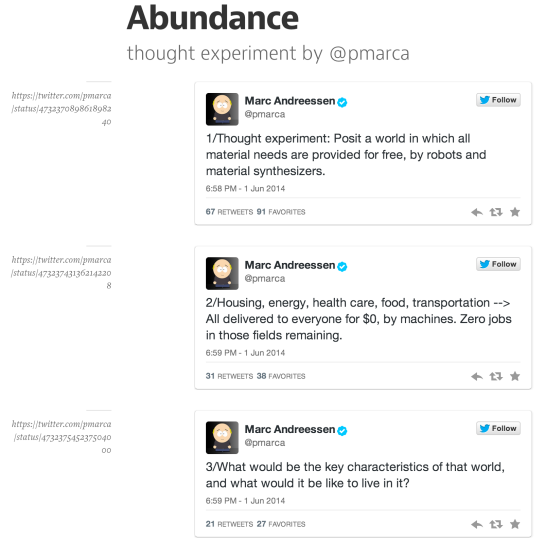Just finished reading “Jony Ive: The Genius Behind Apple’s Greatest Products” by Leander Kahney, which is mainly fascinating because of the abscence of it’s subject. Ive has said so little in public (aside from in corporate pr films) that the book paints a detailed picture of everything around him – the design culture he was raised in, both in education and industry, the design group and wider engineering/manufacturing culture at Apple – right down to gems like this:
Needless to say I really enjoyed it – but Ive is just the hook the book hangs off. It wouldn’t exist or sell as a book without him, although it’s full of fascinating detail about how Apple products are designed and made.
The little you do learn about Ive as a design leader is good. A little hagiographic, but hey. I’d recommend it more for the insights into the design, making and manufacturing approach at Apple than the man at the centre of it however.
‘In America, on the other hand,’ Milton explained, ‘designers are very much serving what industry wants. In Britain, there is more of the culture of the garden shed, the home lab, the ad hoc and experimental quality. And Jony Ive interacts in such a way … [he] takes big chances, instead of an evolutionary approach to design – and if they had focus-grouped Ive’s designs, they wouldn’t have been a success.’
If the education system in America tended to teach students how to be an employee, British design students were more likely to pursue a passion and to build a team around them.
‘As an industrial designer, you have to take that great idea and get it out into the world, and get it out intact. You’re not really practising your craft if you are just developing a beautiful form and leaving it at that.’
I can’t have people working in cubicle hell. They won’t do it. I have to have an open studio with high ceilings and cool shit going on. That’s just really important. It’s important for the quality of the work. It’s important for getting people to do it. – ROBERT BRUNNER
He wanted a ‘small, really tight’ studio. ‘We would run it like a small consulting studio, but inside the company,’ he said. ‘Small, effective, nimble, highly talented, great culture.’4 Setting up a consultancy inside Apple seemed in line with the company’s spirit: unconventional, idea driven, entrepreneurial. ‘It was because, really, I didn’t know any other way,’ Brunner explained. ‘It wasn’t a flash of brilliance: that was the only thing I knew how to do.’
In 1997, English contributed photos to Kunkel’s book about the design group, AppleDesign, but he also worked with a lot of other design studios in the Valley. To his eye, Apple seemed different. It wasn’t just the tools and their focus; the place was rapidly populated with designer toys, too, including spendy bikes, skateboards, diving equipment, a movie projector and hundreds of films. ‘It fostered this really creative, take-a-risk atmosphere, which I didn’t see at other firms,’ said English.
Brunner also made about half a dozen of the designers ‘product line leaders’ (PLLs) for Apple’s major product groups: CPUs, printers, monitors and so on. The PLLs acted as liaisons between the design group and the company, much in the way an outside design consultancy would operate. ‘The product groups felt there was a contact within the design group,’ Brunner said.
Brunner wanted to shift the power from engineering to design. He started thinking strategically. His off-line ‘parallel design investigations’ were a key part of his strategy. ‘We began to do more longer-term thinking, longer-term studies around things like design language, how future technologies are implemented, what does mobility mean?’ The idea was to get ahead of the engineering groups and start to make Apple more of a design-driven company, rather than a marketing or engineering one. ‘We wanted to get ahead of them, so we’d have more ammunition to bring to the process.’
In hindsight, Brunner’s choices – the studio’s separation from the engineering groups, its loose structure, the collaborative workflow and consultancy mind-set – turned out to be fortuitous. One of the reasons Apple’s design team has remained so effective is that it retains Brunner’s original structure. It’s a small, tight, cohesive group of extremely talented designers who all work on design challenges together. Just like the designers had done at Lunar, Tangerine and other small agencies. The model worked.
‘Bob did more than lay the foundations for Jony’s design team at Apple – he built the castle,’ said Clive Grinyer. ‘After Bob, it was the first time that an in-house design team was cool.’
Jony was looking for the Mac NC’s ‘design story’. As his dad, Mike, had instilled in him, developing the design story was an essential first step in conceiving something entirely new. ‘As industrial designers we no longer design objects,’ Jony said. ‘We design the user’s perceptions of what those objects are, as well as the meaning that accrues from their physical existence, their function and the sense of possibility they offer.’
‘When you see the most dramatic shift is when you transition from an abstract idea to a slightly more material conversation,’ Jony said. ‘But when you made a 3-D model, however crude, you bring form to a nebulous idea, and everything changes – the entire process shifts. It galvanizes and brings focus from a broad group of people.
Though Jobs rejected all five names, Segall refused to give up on iMac. He went back again with three or four new names, but again pitched iMac. This time, Jobs replied: ‘I don’t hate it this week, but I still don’t like it.’43 Segall heard nothing more about the name from Jobs personally, but friends told him that Jobs had the name silk-screened onto prototypes of the new computer, testing it out to see if he liked the look. ‘He rejected it twice but then it just appeared on the machine,’ Segall recalled. He came to believe that Jobs changed his mind just because the lower-case ‘i’ looked good on the product itself.
Boxes may seem trivial, but Jony’s team felt that unpacking a product greatly influenced the all-important first impressions. ‘Steve and I spend a lot of time on the packaging,’ Jony said then. ‘I love the process of unpacking something. You design a ritual of unpacking to make the product feel special. Packaging can be theater, it can create a story.’
‘Innovation,’ he wrote, ‘is rarely about a big idea; more usually it’s about a series of small ideas brought together in a new and better way. Jony’s fanatical drive for excellence is, I think, most evident in the stuff beyond the obvious; the stuff you perhaps don’t notice that much, but which makes a difference to how you interact with the product, how you feel about it.’
‘Apple designers spend ten percent of their time doing traditional industrial design: coming up with ideas, drawing, making models, brainstorming. They spend ninety percent of their time working with manufacturing, figuring out how to implement their ideas.’
On iPhone launch day, Jobs turned to Kay and casually asked, ‘What do you think, Alan? Is it good enough to criticize?’ The question was a reference to a comment made by Kay almost twenty-five years earlier, when he had deemed the original Macintosh ‘the first computer worth criticizing’. Kay considered Jobs’s question for a moment and then held up his moleskin notebook. ‘ “Make the screen at least five inches by eight inches and you will rule the world,” he said.’
‘I have literally seen buildings where as far as the eye can see, where you can see machines carving, mostly aluminium, dedicated exclusively for Apple at Foxconn,’ said Guatam Baksi, a product design engineer at Apple from 2005 to 2010. ‘As far as the eye can see.’
Unibody represents a giant financial gamble by Apple. When it started investing seriously around 2007, Apple contracted with a Japanese manufacturer to buy all the milling machines it could produce for the next three years. By one estimate, that was 20,000 CNC milling machines a year, some costing upward of $250,000 and others $1 million or more. The spending didn’t stop there, as Apple bought up even more, acquiring every CNC milling machine the company could find. ‘They bought up the entire supply,’ said one source. ‘No one else could get a look in.’
Apple spent $9.5 billion on capital expenditures, the majority of which was earmarked for product tooling and manufacturing processes. By comparison, the company spent $865 million on retail stores. Thus, Apple spent nearly eleven times as much on its factories as on its stores, most of which are in prime (that is, expensive) real estate locations.
Enter the need for so-called friction stir welding (FSW), a solid-state welding process invented in 1991. It’s actually less of a weld than a recrystallization, as the atoms of the two pieces are joined in a super strong bond when a high-speed bobbin is moved along the edges to be bonded, creating friction and softening the material almost to its melting point. The plasticized materials are then pushed together under enormous force, and the spinning bobbin stirs them together. The result is a seamless and very strong bond. In the past, FSW required machines costing up to three million dollars apiece, so its use was confined to fabricating rocket and aircraft parts. More recent advances allowed CNC milling machines to be retrofitted to perform FSW at a much lower cost. In addition to its other advantages, FSW produces no toxic fumes and finished pieces that require no extra filler metal for further machining, making the process more environmentally friendly than traditional welding.
‘That’s probably the single greatest effect, that we nowadays expect many things to have better designs. Because of Apple, we got to compare crappy portable computers versus really nice ones, crappy phones versus really nice ones. We saw a before-and-after effect. Not over a generation, but within a few years. Suddenly 600 million people had a phone that put to shame the phone they used to have. That is a design education at work within our culture.’








